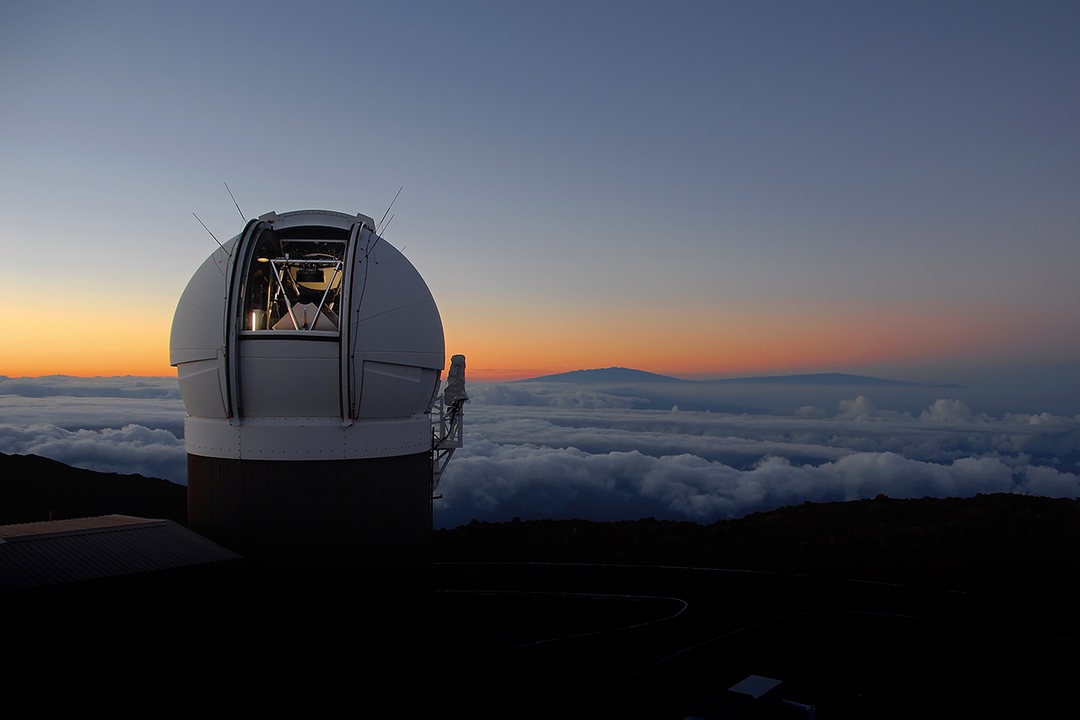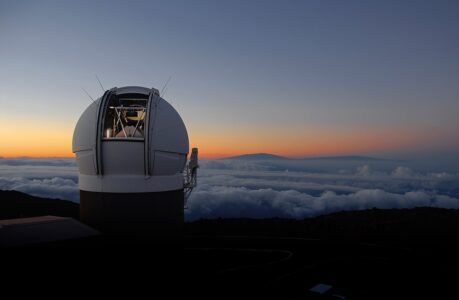Introduction: Gazing into the Cosmic Abyss
In the vast expanse of the universe, where stars twinkle like distant beacons and galaxies swirl in mesmerizing spirals, lies a realm of endless wonder and discovery. Pan-STARRS, an acronym for Panoramic Survey Telescope and Rapid Response System, stands as a sentinel at the forefront of astronomical exploration, peering into the depths of space with unparalleled clarity and precision. With its keen eye trained on the heavens, Pan-STARRS offers humanity a glimpse into the mysteries of the cosmos, shedding light on the enigmatic forces that shape our universe.
Unveiling Pan-STARRS: A Brief Overview
Pan-STARRS, headquartered in Hawaii, comprises a network of telescopes designed to survey the night sky with remarkable depth and breadth. Its primary mission is to detect and track near-Earth objects, including asteroids and comets, that may pose a threat to our planet. However, its capabilities extend far beyond planetary defense, encompassing a wide range of astronomical research endeavors.
Tracking Near-Earth Objects: Safeguarding Our Planet
One of Pan-STARRS’ most vital functions is its role in identifying and monitoring near-Earth objects (NEOs) that could potentially impact Earth. By scanning the skies with its advanced imaging technology, Pan-STARRS helps astronomers catalog and track these celestial wanderers, providing crucial data for assessing the risk they pose to our planet. With each passing night, Pan-STARRS adds to our understanding of the cosmic neighborhood, enabling scientists to better safeguard humanity from the perils of space.
Mapping the Universe: Charting the Cosmic Landscape
Beyond its planetary defense duties, Pan-STARRS serves as a cosmic cartographer, mapping the vast reaches of the universe with unparalleled precision. Through its panoramic surveys of the night sky, Pan-STARRS has generated expansive catalogs of stars, galaxies, and other celestial objects, enriching our knowledge of the cosmos and fueling countless scientific discoveries. From distant quasars to ancient galaxies, Pan-STARRS’ observations offer a panoramic view of the universe’s evolution and structure.
Probing Transient Phenomena: Capturing Cosmic Events in Real-Time
In addition to its systematic surveys, Pan-STARRS excels at capturing transient phenomena that flare and fade in the blink of an eye. Supernovae, gamma-ray bursts, and other cosmic explosions are among the many ephemeral events that Pan-STARRS has detected and studied, providing astronomers with invaluable insights into the dynamic nature of the universe. By swiftly responding to these fleeting phenomena, Pan-STARRS enables scientists to unravel the mysteries of cosmic cataclysms in real-time.
Cutting-Edge Technology: The Eyes of Pan-STARRS
At the heart of Pan-STARRS’ observational prowess lies its state-of-the-art telescopes and imaging systems, which combine cutting-edge technology with innovative design to deliver unprecedented views of the cosmos.
Pan-STARRS Telescopes: Eyes on the Sky
The Pan-STARRS observatories are equipped with a suite of telescopes, each optimized for different aspects of astronomical observation. The primary instrument, Pan-STARRS1, boasts a wide-field imaging camera capable of capturing panoramic views of the night sky with remarkable detail and depth. Meanwhile, Pan-STARRS2, with its advanced spectroscopic capabilities, delves into the chemical composition and dynamics of celestial objects, unraveling the secrets of the cosmos one spectrum at a time.
CCD Detectors: Pixels of Discovery
At the heart of Pan-STARRS’ imaging systems are charge-coupled device (CCD) detectors, semiconductor devices that convert light into digital signals for analysis. These pixelated sensors serve as the eyes of Pan-STARRS, capturing photons from distant stars and galaxies with extraordinary sensitivity and precision. With each exposure, CCD detectors transform the faint whispers of cosmic light into vibrant images that reveal the hidden wonders of the universe.
Data Processing: Unraveling the Cosmic Tapestry
The deluge of data collected by Pan-STARRS’ telescopes presents a monumental challenge for astronomers, requiring sophisticated algorithms and computational techniques to analyze and interpret. Thanks to its robust data processing pipeline, Pan-STARRS transforms raw observations into actionable insights, identifying celestial objects, measuring their properties, and cataloging their characteristics with remarkable efficiency. From petabytes of pixel data emerges a rich tapestry of cosmic knowledge, ready to be explored by astronomers around the world.
Pan-STARRS in Action: From Discovery to Exploration
With its panoramic surveys and rapid response capabilities, Pan-STARRS has made significant contributions to our understanding of the universe, uncovering new phenomena and inspiring awe and wonder among scientists and stargazers alike.
Discovering New Worlds: Exoplanets and Beyond
One of Pan-STARRS’ most remarkable achievements has been the discovery of exoplanets—worlds orbiting distant stars beyond our solar system. By meticulously monitoring the night sky for the telltale signs of planetary transits and gravitational microlensing events, Pan-STARRS has identified thousands of exoplanet candidates, expanding our cosmic horizons and fueling the search for life beyond Earth. These distant worlds, illuminated by the light of distant suns, offer tantalizing glimpses into the diversity and complexity of planetary systems across the cosmos.
Exploring the Transient Universe: Supernovae, Gamma-Ray Bursts, and More
In its quest to capture cosmic phenomena in real-time, Pan-STARRS has observed a menagerie of transient events, from the explosive deaths of massive stars to the cataclysmic mergers of neutron stars and black holes. By swiftly detecting and characterizing these fleeting phenomena, Pan-STARRS provides astronomers with a unique window into the dynamic processes that shape the cosmos, shedding light on the birth, life, and death of stars and galaxies. Each transient event captured by Pan-STARRS adds another chapter to the ongoing saga of cosmic evolution, enriching our understanding of the universe’s ever-changing landscape.
Surveying the Cosmic Frontier: Mapping the Universe’s Structure and Evolution
Through its panoramic surveys of the night sky, Pan-STARRS has created detailed maps of the universe’s structure and evolution, revealing the intricate web of galaxies that populate the cosmic landscape. From the clustering of galaxies to the distribution of dark matter, Pan-STARRS’ observations provide crucial insights into the large-scale structure of the universe, informing theories of cosmic evolution and shaping our understanding of the cosmos’ origins and fate. With each sweep of its telescopic gaze, Pan-STARRS uncovers new clues to the universe’s mysteries, guiding astronomers on a journey of exploration and discovery.
The Future of Pan-STARRS: Charting a Course for Cosmic Discovery
As technology advances and our understanding of the universe deepens, Pan-STARRS stands poised to continue its mission of exploration and discovery, pushing the boundaries of astronomical knowledge and inspiring future generations of scientists and stargazers.
Pan-STARRS-3: Expanding the Horizons of Discovery
With plans already underway for the next generation of Pan-STARRS telescopes, dubbed Pan-STARRS-3, astronomers eagerly anticipate the dawn of a new era in cosmic exploration. Equipped with even more powerful instruments and advanced imaging technology, Pan-STARRS-3 will delve deeper into the mysteries of the universe, uncovering new worlds, mapping distant galaxies, and capturing the cosmic drama unfolding across the cosmos. As Pan-STARRS-3 takes its place among the stars, it will continue the legacy of its predecessors, illuminating the darkest corners of the universe and inspiring wonder and curiosity for generations to come.
Citizen Science: Engaging the Public in Cosmic Discovery
In addition to its scientific endeavors, Pan-STARRS engages the public in the thrill of cosmic discovery through citizen science initiatives and educational outreach programs. By inviting amateur astronomers and enthusiasts to participate in the search for near-Earth objects and transient events, Pan-STARRS fosters a sense of community and collaboration, empowering individuals of all backgrounds to contribute to our understanding of the universe. Through hands-on activities, public lectures, and online resources, Pan-STARRS inspires the next generation of scientists and stargazers, nurturing a lifelong passion for exploration and discovery.
International Collaboration: Bridging Borders in the Pursuit of Knowledge
At its core, Pan-STARRS embodies the spirit of international collaboration, bringing together astronomers from around the world in the pursuit of knowledge and discovery. Through partnerships with observatories, research institutions, and space agencies, Pan-STARRS fosters a global network of scientific cooperation, uniting diverse perspectives and expertise in the quest to unravel the mysteries of the cosmos. By working together across borders and disciplines, Pan-STARRS and its collaborators pave the way for groundbreaking discoveries and transformative insights that transcend the boundaries of nations and cultures.
Conclusion
In the ever-expanding tapestry of the cosmos, Pan-STARRS stands as a beacon of discovery, illuminating the darkest corners of the universe with its panoramic views and cutting-edge technology. From tracking near-Earth objects to mapping distant galaxies, Pan-STARRS continues to push the boundaries of astronomical knowledge, inspiring wonder and curiosity in scientists and stargazers alike. As we gaze into the depths of space, guided by the eyes of Pan-STARRS, we embark on a journey of exploration and discovery that transcends the limits of our imagination, revealing the beauty and complexity of the universe in all its glory.

